Subtotal: £94.82
4 X Red & White Swordtails – Xiphophorus Hellerii – Livebearer, Perfect for Beginners, These Prolific Breeders Enhance Any Aquarium with Their Graceful Movement and Colorful Presence
£20.49 Original price was: £20.49.£17.42Current price is: £17.42.
Welcome these beautiful 4 X Red & White Swordtails (Xiphophorus Hellerii) into your aquarium. Their vibrant red and white colors enhance any tank, making them ideal for beginners. These peaceful companions thrive in community setups, creating a stunning aquatic display.
1000 in stock
Species Introduction
The Red & White Swordtails, scientifically known as Xiphophorus hellerii, are captivating freshwater fish that thrive in various aquatic environments. Originating from Central America, particularly Mexico and Guatemala, these livebearers are known for their vibrant colors and unique tail shapes, resembling a sword. They play an important role in their ecosystems, contributing to biodiversity.
Key Features
| Specification | Details |
|---|---|
| Benefits | Enhances your aquarium ecosystem |
| Quality | Premium aquarium-grade materials |
| Ease of Use | Simple setup and maintenance |
Care Requirements Dashboard
✓ Care Level: Easy
Tank Size: Minimum 20 gallons
Water Temperature: 72°F – 82°F (22°C – 28°C)
pH Range: 6.8 – 8.4
Hardness: 10 – 30 dGH
Natural Behavior & Temperament
Red & White Swordtails are peaceful and social, making them ideal for community tanks. They exhibit lively swimming patterns and thrive in groups, ideally kept in schools of five to six. Their curious nature encourages exploration, enhancing the aquarium experience.
Tank Setup Guide
✓ Ideal Environment: Planted tanks with open swimming space
Substrate: Fine gravel or sand
Decorations: Rocks, driftwood, and live plants
Creating an environment that mimics their natural habitat enhances the well-being of your Swordtails. Use fine gravel or sand for the substrate, and include decorations like rocks and driftwood for hiding spots. Ensure ample open swimming space, as these fish are active swimmers.
Water Quality Management
✓ Good Water Quality: Essential for health
pH Level: 6.8 – 8.4
Temperature: 72°F – 82°F
Regular Testing: Weekly water checks recommended
Maintaining high water quality is crucial for the health and longevity of your Swordtails. Regular testing of water parameters and performing weekly water changes will help ensure a thriving habitat.
Feeding & Nutrition
✓ Balanced Diet: Essential for vibrant colors
Diet: High-quality flakes, pellets, and live foods
Feeding Schedule: 2-3 times daily
A balanced diet is essential for the health and vibrancy of your Swordtails. High-quality flakes or pellets should form the basis of their diet, supplemented with live or frozen foods. Feed them 2-3 times daily, offering only as much as they can consume in a few minutes.
Compatibility Guide
✓ Peaceful Community Fish: Ideal tank mates
Compatible Species: Tetras, Guppies, Corydoras
Avoid: Aggressive species like Cichlids
Red & White Swordtails are peaceful and can coexist with many community members. Choose compatible species that share similar water parameters to ensure a harmonious environment.
Health & Wellness
✓ Regular Monitoring: Key to health
Common Issues: Ich, fin rot, and swim bladder disease
Prevention: Maintain water quality and diet
Regular monitoring is essential for the health of your Swordtails. Common health issues can arise from poor water quality or stress. Maintaining optimal conditions and observing your fish can help prevent problems.
Breeding Information
✓ Prolific Breeders: Easy to breed in captivity
Breeding Method: Livebearers, internal fertilization
Fry Care: Separate from adults for safety
Swordtails are prolific breeders, giving birth to live fry. To encourage breeding, maintain a ratio of one male to two or three females. Separate the fry from adults to ensure their safety and provide a nurturing environment.
Acclimation Process
✓ Gentle Introduction: Important for stress reduction
Acclimation Method: Drip acclimation recommended
Duration: 1-2 hours
A gentle acclimation process is crucial. The drip acclimation method is recommended to help your fish adjust to their new environment gradually, reducing stress and ensuring a smooth transition.
Long-term Care
✓ Lifespan: Up to 5 years with proper care
Growth Expectations: Up to 4 inches
With proper care, Swordtails can live for up to five years. Regular monitoring of health and water quality will contribute to their longevity and overall well-being.
Natural Habitat Recreation
✓ Biotope Setup: Mimic natural surroundings
Elements: Live plants, driftwood, and rocks
Creating a biotope that mimics their natural habitat can enhance their well-being. Incorporating live plants and natural decorations promotes natural behaviors and provides a secure environment.
Seasonal Care Adjustments
✓ Seasonal Changes: Monitor temperature and light
Winter: Reduce temperature fluctuations
Summer: Ensure adequate oxygenation
As seasons change, monitor and adjust conditions in your aquarium. Stable temperatures in winter and proper aeration in summer are essential for the health of your Swordtails.
Expert Tips
✓ Professional Advice: Enhance your aquarium experience
Tip: Rotate decorations for enrichment
Tip: Observe for signs of stress
To enhance your experience, consider rotating decorations periodically. This refreshes the environment and reduces boredom for your fish. Regular observation for signs of stress can help address potential issues early.
Troubleshooting
✓ Common Problems: Early detection is key
Issue: Cloudy water
Solution: Check filtration and perform water changes
If you encounter cloudy water, check your filtration system and perform water changes to restore clarity. Early detection and intervention are key to maintaining a healthy environment.
Scientific Background
✓ Taxonomy: Understanding their classification
Family: Poeciliidae
Order: Cyprinodontiformes
Understanding the scientific classification of Red & White Swordtails can provide insights into their behavior and care. They belong to the family Poeciliidae and the order Cyprinodontiformes, which includes other popular aquarium species.
Advanced Care Techniques
✓ Expert-Level Husbandry: Enhance your skills
Technique: Implement a breeding program
Technique: Experiment with tank plants for breeding
For advanced aquarists, implementing a breeding program can produce a variety of colors and patterns. Experimenting with tank plants can create ideal environments for breeding and nurturing fry.
Frequently Asked Questions
Q: What tank size is required for Red & White Swordtails?
Red & White Swordtails thrive best in a tank of at least 75 litres. This size provides ample swimming space for these lively fish, which can grow up to 10 cm in length. A larger tank not only allows for better water quality but also enables the establishment of a more diverse ecosystem, which is beneficial for their wellbeing. Remember, these fish are social creatures and prefer to be in groups; thus, accommodating multiple individuals will require additional space. A well-planted tank with open swimming areas mimics their natural habitat, promoting natural behaviours and reducing stress.
✓ Expert Tip
Consider adding a light substrate and plenty of vegetation to create a comfortable environment that encourages foraging and hiding, which is essential for their mental health.
Q: What water parameters do Red & White Swordtails require?
For optimal health, Red & White Swordtails thrive in water with a pH range of 7.0 to 8.0 and a temperature between 24°C to 28°C. It is crucial to maintain stable conditions, as fluctuations can stress these fish. Regular testing of water parameters using a reliable kit is recommended. Additionally, Swordtails prefer moderately hard water, which can be achieved through the addition of minerals or specific substrates. Implementing a quality filtration system will help keep the water clean and oxygen-rich, further enhancing their living environment.
✓ Expert Tip
Perform regular water changes of about 25% weekly to maintain excellent water quality and keep your fish friends healthy and vibrant.
Q: How often should I feed Red & White Swordtails?
Swordtails should be fed small amounts 2-3 times a day. It is essential to provide a varied diet, comprising high-quality flake food, pellets, and occasional treats such as blanched vegetables or live foods like brine shrimp. Overfeeding can lead to poor water quality and health issues; hence, only offer what they can consume within a few minutes. Always monitor their body condition to ensure they are not becoming overweight, as this can lead to various health problems.
✓ Expert Tip
Consider rotating their diet to include different food types to ensure they receive all the necessary nutrients for growth and colour enhancement.
Q: What are the best tank mates for Red & White Swordtails?
Swordtails are generally peaceful and can coexist with various community fish. Suitable tank mates include other livebearers like Platies and Guppies, as well as Tetras, Corydoras, and other non-aggressive species. Avoid keeping them with overly aggressive fish or those that may nip at their fins. When introducing new fish, ensure they are of a similar size to prevent bullying and stress. As social creatures, Swordtails prefer to be in groups, so consider keeping at least three individuals together for a more harmonious environment.
✓ Expert Tip
Always introduce new fish gradually, ideally in pairs or more, to reduce stress and encourage a peaceful community atmosphere.
Q: How do I properly acclimatise Red & White Swordtails to my aquarium?
Acclimatisation is crucial for the health of Red & White Swordtails. Begin by floating the sealed bag in your aquarium for about 15-20 minutes to equalise the temperature. After this, gradually introduce small amounts of your aquarium water into the bag over the next hour. This process helps them adjust to the water chemistry. Once acclimatised, gently net the fish into the tank and discard the bag water to prevent introducing any contaminants. Avoid pouring the bag water into your aquarium, as it may contain harmful substances.
✓ Expert Tip
Always monitor your new fish for signs of stress or illness for at least a week after introduction to ensure a smooth transition.
Q: What are the signs of healthy Red & White Swordtails?
Healthy Swordtails exhibit vibrant colours, clear eyes, and active swimming behaviour. Their fins should be intact and free from tears or fraying, while their bodies should be free of lesions or unusual swelling. Healthy fish will also display normal feeding behaviour, eagerly accepting food. Regular observation will help you spot any changes in behaviour or appearance, which can indicate stress or illness. If you notice lethargy, loss of appetite, or abnormal swimming patterns, it may be time to assess their environment and health.
✓ Expert Tip
Keep a close eye on your fish friends and maintain a routine for water testing to help catch any potential issues early.
Q: How do I successfully breed Red & White Swordtails?
Breeding Swordtails is relatively straightforward, as they are livebearers. To encourage breeding, maintain a ratio of one male to two females, providing ample space and hiding spots. Ensure water parameters are optimal and introduce a high-quality diet to the females to support healthy fry development. Once pregnant, females will exhibit a dark spot near their anal fin, indicating the presence of developing fry. After birth, it is advisable to separate the fry from adults to prevent predation. Using a breeding box or separate tank can ensure a higher survival rate for the young.
✓ Expert Tip
Consider providing finely crushed flake food or infusoria for the fry until they are large enough to consume standard food.
Q: What temperature should I maintain for Red & White Swordtails?
The ideal temperature range for Red & White Swordtails is between 24°C and 28°C. Maintaining a consistent temperature within this range is vital for their health and activity levels. Sudden temperature fluctuations can lead to stress and illness. It is advisable to use a reliable aquarium heater with a thermometer to monitor the water temperature accurately. Regular checks will ensure that the environment remains stable, promoting optimal growth and behaviour.
✓ Expert Tip
Avoid placing the aquarium in direct sunlight or near heating vents, as this can cause temperature fluctuations that may harm your fish.
Q: How long do Red & White Swordtails typically live in captivity?
In captivity, Red & White Swordtails can live for 3 to 5 years with proper care. Factors influencing their lifespan include water quality, diet, and overall habitat conditions. Regular maintenance of the aquarium, including water changes and monitoring of water parameters, is essential for their longevity. Providing a balanced diet and ensuring a stress-free environment will also contribute significantly to their health and lifespan. Keeping them in a well-maintained community tank with compatible tank mates will further enhance their quality of life.
✓ Expert Tip
Observe your fish regularly for any signs of stress or illness; early detection is key to ensuring they live a long and healthy life.
Q: What type of substrate is most suitable for Red & White Swordtails?
A fine to medium gravel substrate is generally most suitable for Red & White Swordtails. This type of substrate allows for easy digging and foraging, mimicking their natural habitat. It is also essential to avoid sharp substrates, as these can injure their delicate fins and bodies. Additionally, incorporating plants and decorations can provide hiding spots and reduce stress levels. It is recommended to rinse the substrate thoroughly before adding it to the tank to remove any dust or debris, ensuring a clean environment for your aquatic companions.
✓ Expert Tip
Consider layering the substrate with larger gravel at the bottom and finer gravel on top to create a more natural appearance and support plant growth.
Q: What behavioural patterns should I expect from Red & White Swordtails?
Red & White Swordtails are known for their lively and social behaviour. They often swim in groups, showcasing their playful nature. You may observe them darting around the tank, engaging in gentle sparring, especially among males. They are diurnal, meaning they are most active during the day and tend to rest at night. Swordtails may also exhibit territorial behaviour, particularly males, so providing ample space and hiding spots can help reduce conflicts. Regular interaction with your aquatic companions will allow you to appreciate their personalities and unique behaviours.
✓ Expert Tip
Observe their interactions and provide a stimulating environment with plants and decorations to encourage natural behaviours and reduce stress.
Q: How can I prevent common diseases in Red & White Swordtails?
Preventing diseases in Red & White Swordtails begins with maintaining excellent water quality. Regular water changes and monitoring of parameters are essential. Quarantining new fish before introducing them to an established tank can prevent the spread of diseases. Additionally, providing a balanced diet will strengthen their immune system. Observe your fish regularly for any signs of illness, such as changes in behaviour, loss of appetite, or visible lesions. Early detection and treatment are crucial in preventing the spread of diseases within your aquarium.
✓ Expert Tip
Consider using a high-quality fish medication as a preventative measure during stressful situations, such as tank relocations or after water changes.
Q: What lighting conditions do Red & White Swordtails prefer?
Swordtails thrive in moderate lighting, which mimics their natural habitat. Bright lights can cause stress and encourage algae growth, while low light may inhibit plant growth. A balanced lighting schedule of around 10-12 hours per day is ideal. Consider using LED lights that can be adjusted for brightness, allowing you to create a comfortable environment for both plants and fish. Providing shaded areas with plants can also help Swordtails feel secure and reduce stress during bright periods.
✓ Expert Tip
Use a timer to ensure consistency in lighting, as sudden changes can be stressful for your aquatic companions.
Q: How do I recognise stress in Red & White Swordtails?
Recognising stress in Red & White Swordtails involves observing changes in behaviour and physical appearance. Signs of stress may include hiding, lethargy, or erratic swimming patterns. Additionally, you may notice clamped fins, faded colours, or excessive fin nipping from tank mates. If you observe these signs, it is essential to assess water quality, tank mates, and overall environment. Providing hiding spots, reducing light intensity, or even rearranging decorations can help alleviate stress. Always ensure that your fish are in a stable and comfortable environment to promote their wellbeing.
✓ Expert Tip
Regular monitoring and interaction can help you spot stress early, allowing you to take action before it escalates.
Q: What natural habitat conditions should I replicate for Red & White Swordtails?
To replicate the natural habitat of Red & White Swordtails, aim for a well-planted tank with plenty of open swimming space. They are native to freshwater rivers and streams, so incorporating natural elements like rocks, driftwood, and plants will enhance their environment. Maintaining a slightly acidic to alkaline pH, moderate hardness, and warm temperatures will closely mimic their natural conditions. Additionally, providing areas of shade and bright spots will create a balanced environment that promotes their natural behaviours and reduces stress.
✓ Expert Tip
Consider using live plants that can provide additional benefits, such as oxygenation and natural filtration, enhancing the overall quality of the environment.


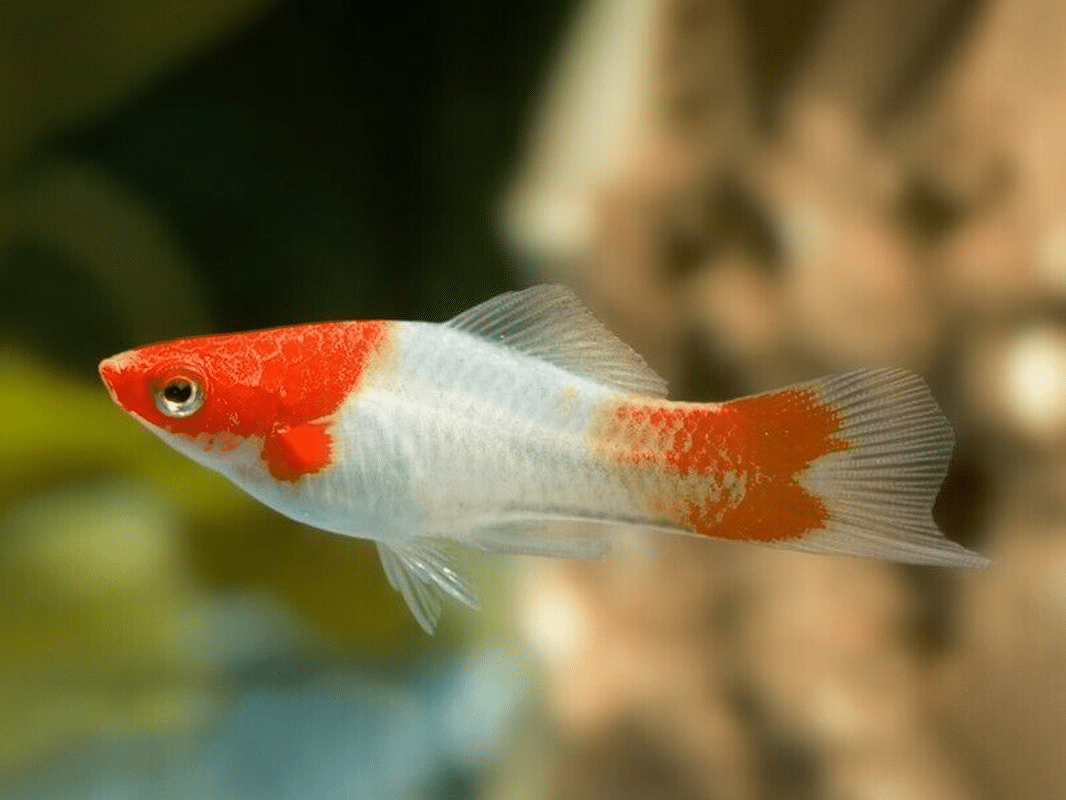
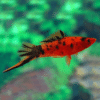



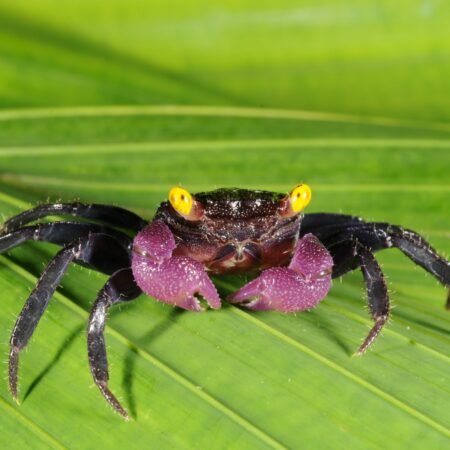


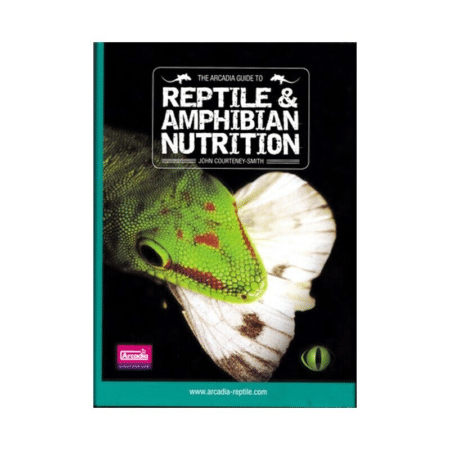

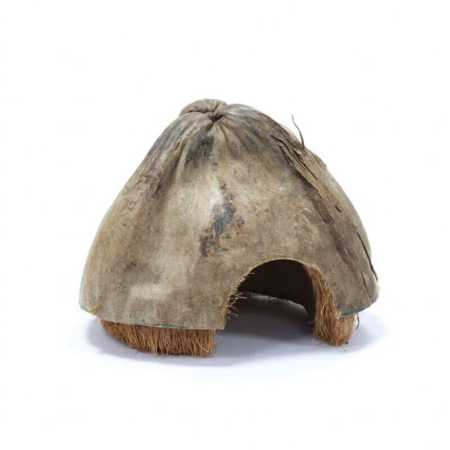
Emily Carter (verified owner) –
I recently purchased 4 Red & White Swordtails, and I can’t express how thrilled I am with them! As a passionate fish parent, I prioritize the health and happiness of my aquatic friends, and these livebearers have exceeded my expectations. Within just a week, they settled wonderfully into my 30-gallon freshwater tank, swimming gracefully and showing off their vibrant colors.
They are so lively and playful, often exploring their surroundings and interacting with the other fish. I’ve had experience with other swordtail varieties, but the striking contrast of red and white on these beauties is truly captivating.
One minor concern was that they initially seemed a bit shy, but after a couple of days, they became more confident. I recommend providing plenty of plants and hiding spots to help them feel at home.
Overall, I think these tropical fish are perfect for both beginners and seasoned aquarists. They are hardy and adapt well to various water conditions. I would definitely buy them again and encourage anyone looking to enhance their aquarium to consider these fabulous swordtails!
Emily Carter (verified owner) –
I purchased the 4 X Red & White Swordtails about a month ago, and I couldn’t be happier with my decision! These little guys have brought so much life and color to my 30-gallon community tank. Their graceful movements are captivating, and I find myself spending hours just watching them swim around.
When they first arrived, they were packed with care and acclimated to my aquarium beautifully. It’s been fascinating to observe their personalities emerge as they settled in. I love that they are livebearers; within the first couple of weeks, I noticed the female was already showing signs of pregnancy! This is a great feature for anyone wanting to breed or simply enjoy watching the lifecycle of freshwater fish.
Compared to other fish I’ve kept, these swordtails really stand out due to their vibrant colors and hardy nature, making them perfect for beginners like me. My only slight concern is that they can be a bit nippy with each other during feeding time, so I make sure to provide plenty of hiding spaces.
Overall, I highly recommend these swordtails to anyone looking to enhance their aquarium with cheerful and dynamic tropical fish. They bring a unique charm that can brighten any setup!